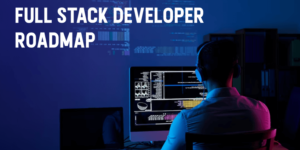
Technologies come and go, but some persistently challenge our understanding of how to build dynamic and engaging applications. Among these HTMX and traditional HTML have emerged as vital players, each showing distinct purposes in the creation of modern web experiences.
Although HTML forms the fundamental building blocks of web pages that enable developers to structure content and basic interactivity, HTMX presents a novel way of building better user interfaces without having to overhaul all that is already built.
In this article, we will discuss the main difference between HTMX and HTML, discussing how HTMX extends the functionality of standard HTML to allow developers to create more interactive, responsive web applications with less effort. Understanding these differences will help developers better choose the right tools and methods for their projects, leveraging the strengths of both technologies for optimal results.
What is HTMX?
HTMX, short for HyperText Markup eXtenstions, is a library that extends HTML, allowing it to handle dynamic interactions without requiring a full-fledged JavaScript framework. Released in 2020, HTMX introduces a declarative approach to interactivity, focusing on simplicity and leveraging the power of HTML and server-side processing, HTMX will be publicly available by 2025.
➢ How HTMX Works:
- HTMX uses HTML attributes like hx-get, hx-post and hx-swap to define client-server interactions.
- This lets the servers manage dynamic content generation with reduced need for heavy client-side JavaScript.
- HTMX can be incrementally added to existing HTML pages, making it an easy integration.
- With attributes such as hx-trigger, HTMX lets developers declare custom user interactions.
- HTMX doesn’t need any additional frameworks such as React or Angular! thus, it is lightweight and efficient.
➢ When to Use HTMX:
HTMX is best for web development projects where simplicity, performance, and server-side integration are in high demand. The most common use cases include:
- Adding interactivity to static sites.
- Creating lightweight dashboards or admin panels.
- Improving existing server-rendered applications.
- Prototyping or building MVPs (Minimum Viable Products).
- However, for highly interactive SPAs with complex state management, JavaScript frameworks might be more suitable.
What is HTML?
HTML is the backbone of web content. HTML came into existence in 1993, providing structure as well as semantics to web page contents. It allows one to define elements such as images, links, tables, and forms. HTML is described as a declarative language, which mainly focuses on describing content rather than dictating how it ought to behave.
➢ Key features of HTML:
- HTML is a markup language used for structuring and specifying the meaning of content. Example
- declares a heading, and declares a paragraph.
- Classic HTML is static, with no default capabilities for dynamic interactivity or behavior.
- The browser interprets the HTML to render content on the screen.
- HTML is complemented with CSS for styling and JavaScript for interactivity.
Also Read: Best HTML Editor for Beginners
HTMX vs HTML: The Core Differences
1. Purpose
HTMX extends HTML’s capability by directly being involved in dynamic interactions in-line. It allows for server-side communications, partial page updating, and user-driven interactivity while avoiding heavy Javascript frameworks.
HTML is primarily used to structure and display content on the web. It serves as the base of any web page, defining its layout and overall structure. Its focus is on organizing and presenting static or minimally interactive content.
2. Nature
HTMX is a dynamic JavaScript library that takes an attribute-driven approach. Its nature is enhancing the static framework of HTML with reactive behaviors, filling the gaps between static pages and the full-scale Javascript framework.
HTML is a static markup language. It is declarative, focusing on describing the structure of content rather than behavior or functionality. It depends on other technologies like CSS for styling and JavaScript for dynamic interactivity.
3. Server-Side Integration
HTMX communicates with the server to fetch data or execute actions. It updates only relevant parts of the page for a smooth experience. HTMX simplifies the integration of servers by enabling partial updates of the DOM. It integrates well with server-side frameworks such as Django, Flask, or Rails.
HTML relies on server responses to render full web pages. Every user interaction, like form submission, generally reloads the entire page. This leads to a slower user experience compared to modern standards. It is very well-suited for static websites or even very simple form handling.
4. Interactivity
HTMX helps in changing the content dynamically, for example, dropdowns, modals and live data changes. It eliminates the need for customized JavaScript while improving the development speed. HTMX further makes integration of AJAX functionality in HTML direct and easy.
HTML’s interactive is limited to static links, forms, and simple elements, often requiring JavaScript for dynamic functionality. The creation of features such as models, tooltips, or dynamic tables requires external scripting. This makes projects with high interactivity demands more complex.
5. Learning Curve
HTMX requires knowledge of its attribute-based syntax but remains less complex than Javascript Frameworks. New developers might find added attributes intuitive. HTMX offers compact documentation, so even developers who only have basic web knowledge will find it accessible.
HTML is easy to learn and use, especially suitable for creating static and minimalistic websites. Its declarative syntax makes it an excellent choice for beginners. However, adding functionality usually requires using other tools or frameworks.
6. Dependencies
HTMX needs the HTMX library, which is a small JavaScript file. It allows access to the features that larger frameworks have. Still, it is lightweight and easy to include in existing projects.
HTML has no dependencies, it is a standalone markup language. It works in all browsers without the need for any other libraries. However, its functionality is only limited to static content.
7. Event Handling
HTMX makes event handling declarative, for instance with hx-trigger, directly within the HTML, allowing it to be interactive. It has the capability of complex triggers like focus or scroll with little configuration. This is beneficial for developers who want clean, more maintainable code.
HTML requires Javascript to be used for event handling, making development more complicated. Interactive behavior such as hover effects, button clicks or live updates in a data feed will require custom script writing often bloating code with reduced maintainability.
Also Read: Best React JS Developer Tools
Advantages of HTMX over JavaScript Frameworks
Still confused at HTMX them looking at the advantages of it might help you in understanding it better.
- HTMX can also compete with the modern JavaScript frameworks, React, Angular and Vue in certain scenarios. Here are its benefits:
- HTMX is tiny – under 10 KB gzipped – compared to lumbering frameworks.
- Declarative syntax cuts down on the time and complexity of developing an application.
- Since the content gets generated server-side, it becomes more accessible to search engines than JavaScript-heavy frameworks.
- HTMX does away with bundlers, compilers, and complex build tools.
- Less JavaScript means a better, faster browser for low-powered devices.
Conclusion
HTMX and HTML serve purposes that are different but somewhat complementary in web development: HTML provides the foundational structure and semantics, while HTMX extends its capabilities to the dynamic and interactive experience without large amounts of JavaScript. HTMX leverages the strengths of server-side processing and the declarative attributes to bridge the gaps between static HTML and the client-side interactivity that has been missing.
For developers who need a lightweight, efficient, and simple way to build modern web applications, HTMX provides a great alternative to JavaScript-heavy frameworks. Understanding the subtleties of both HTML and HTMX can help you make the right tool choice for your development and ensure the smooth delivery of engaging web experiences.






